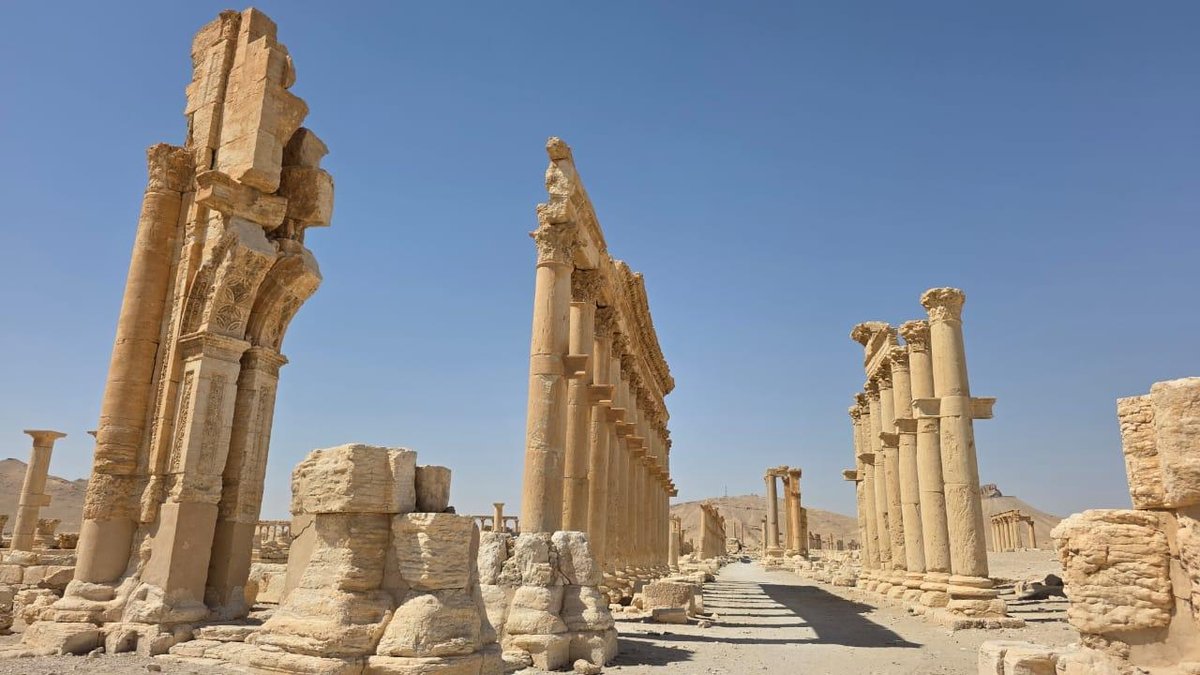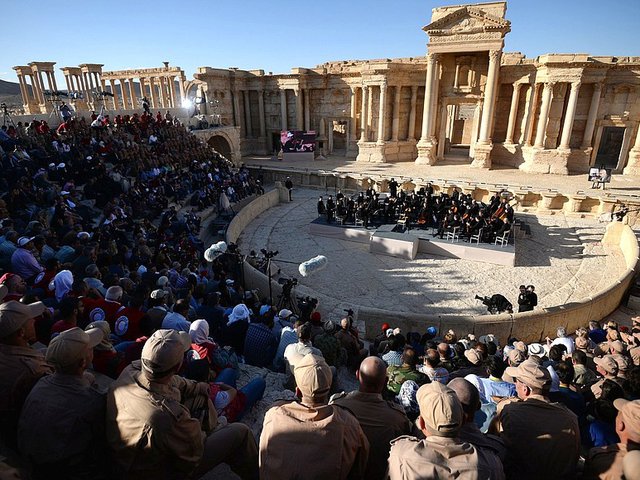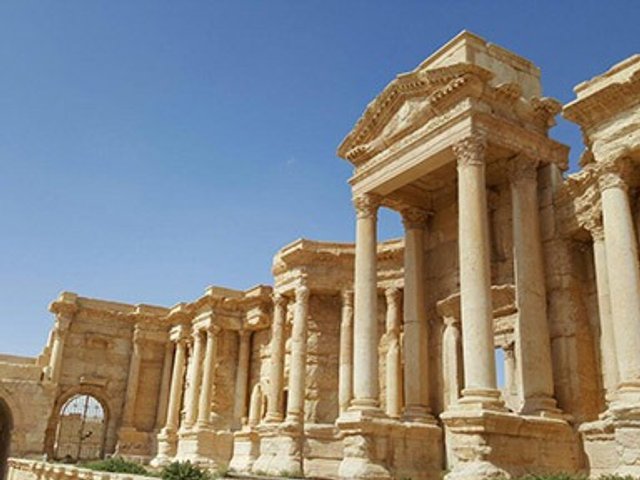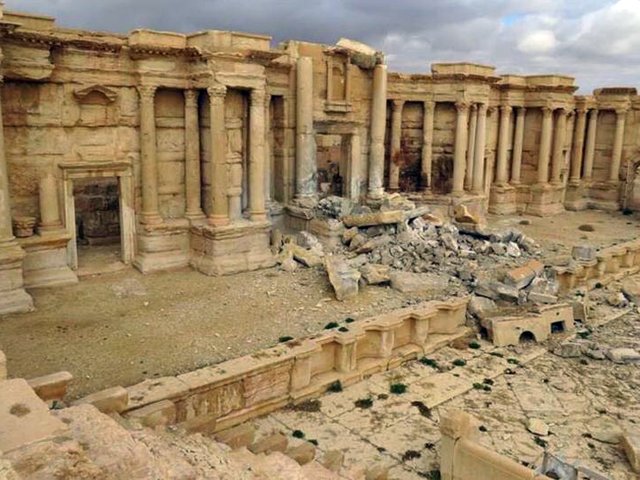Plans are being made for the rehabilitation of the ancient Syrian city of Palmyra, including the UNESCO site’s museum and its artefacts, following the first comprehensive international meeting on the topic since the fall of former president Bashar Al Assad's regime in 2024.
A conference, organised by the University of Lausanne and the international foundation Aliph in Switzerland last week, brought together international heritage experts, antiquities officials and members of the Syrian community for the first time since 2019. The group has since issued recommendations, including the launch of an international expert task force to work towards the removal of Palmyra from the UNESCO List of World Heritage in Danger.
Valery Freland, the executive director of Aliph, told The Art Newspaper that the conference showed the international community to be “fully mobilised” behind these plans. “We are ready to work in three key directions,” he explained. “Rehabilitation of the Palmyra museum, which was damaged and looted by [Isis] and civil war shelling; the restoration of artefacts [currently] in safekeeping at the Damascus Museum; and the repair of the foot bridge leading to the site.”
Freland hopes to begin work on these missions in January 2026, when his team will look for an operator for the museum.
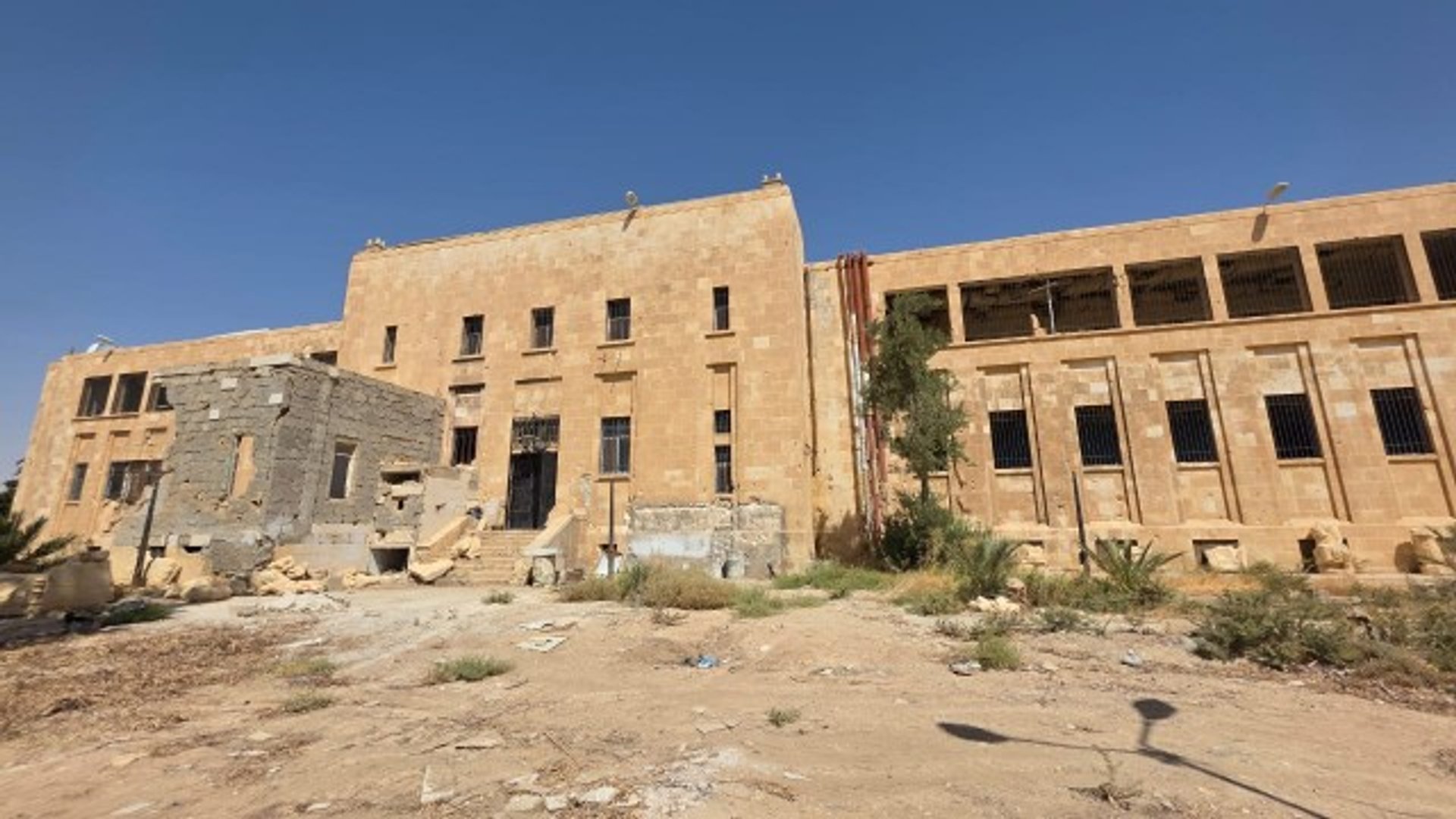
Plans for the future of the museum will involve the local community
Palmyra National Museum, September 2025 © Michel Chaloub
Other recommendations issued by the Syrian Directorate General of Antiquities and Museums (DGAM) following the conference include the urgent stabilisation of the museum's collection and high-priority monuments, and consolidating archaeological data. Plans will also be made to involve local communities through training programs and workshops.
Freland said: “Palmyra was a cultural crossroads and is a symbol of intercultural dialogue and resilience. Its rehabilitation will give hope to the people of Palmyra.”
In 2015, Isis destroyed important landmarks at Palmyra such as the Temple of Bel, Temple of Baalshamin, Arch of Triumph and columns in the Valley of the Tombs. After being temporarily taken back by Assad's army in March 2016, the terrorist group recaptured the city in the following December and inflicted further damage. Conversations regarding the rebuilding of the city have grown since the end of Assad’s regime and the subsequent lifting of international sanctions.
However, the rehabilitation of the ancient city of Palmyra, and the rebuilding of its relationship to the nearby modern city of the same name, present many challenges. David Sassine, an Aliph project manager who undertook a recent site visit to the area, says these challenges include “limited security and access, the presence of unexploded ordnance, and gaps in documentation resulting from years of conflict”.
He adds: “The relationship between the ancient site and the modern city used to be dynamic and economically beneficial. Today, both the archaeological site and the nearby urban area require major rehabilitation to recover and reestablish this connection.”
This sentiment was echoed in the conference’s opening remarks by Lina Kutiefan, the deputy director of DGAM. Addressing colleagues from the Palmyra Museum, as well as Syrian heritage experts and representatives from the Louvre Museum and academic institutions, she spoke of an urgent need to begin small rehabilitation pilot projects on the 200-acre site.
She went on to acknowledge site management challenges, including a lack of electricity and clean drinking water. In later discussions, these issues were described as intrinsically linking the plight of the ruins of Palmyra with that of local people people, who could all benefit—once proper infrastructure is in place—from a return to cultural and environmental tourism.
During a panel on community involvement, Hasan Ali, the director of the Palmyra Museum, also spoke of the local connection to the site. Referencing the third-century queen of Syria’s Palmyrene Empire, he said: “Everyone in Palmyra has a daughter named Zenobia.” He also likened the museum’s former head of antiquities, Khaled al-Asaad, killed by Isis in 2015 for refusing to reveal the location of hidden antiquities, to the ancient queen, who has long been seen as a symbol for the defence of Syrian heritage.
A Syrian woman in attendance at the event spoke of her cousin, who returned to his hometown of Palmyra following the fall of the Assad regime after years of exile in Europe. “Instead of going to his house,” the woman recounted, “he went straight to the ruins.”


